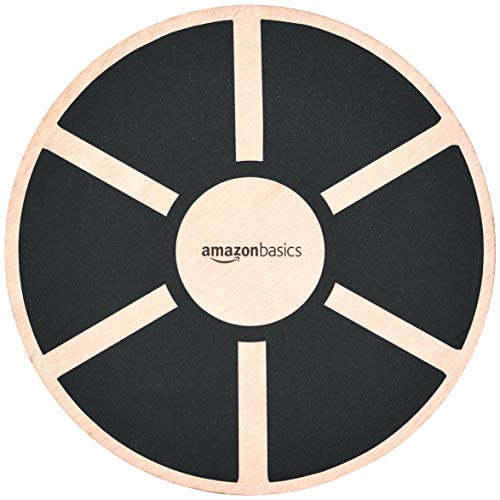4 Static Balance Activities for Kids

This post may contain affiliate links; please see our terms of use for details.
- Poor balance can be improved through regular exercise.
- Static balance activities engage the entire body, improving children’s coordination, stability, and physical fitness.
- These activities focus on core strengthening, which is essential for maintaining balance and stability.
- Activities like Freeze Dance promote postural balance and body awareness, while balance boards help children maintain stability through constant core engagement.
Static balance activities are a fantastic way to improve your child’s coordination, stability, and general physical fitness. By incorporating these exercises into their routine, your children can develop better balance control, strengthen core muscles, and prevent falls.
A 2019 study on the effect of static and dynamic balance training11. Başakcı Çalık, B., Bas Aslan, U., Aslan, Ş., & Gür Kabul, E.. The effect of static and dynamic balance training on balance in children with congenital blindness. Journal of Contemporary Medicine. 2019. https://doi.org/10.16899/gopctd.461566 on balance in children with congenital blindness found that a 45-minute exercise program improved their balance functions when performed bi-weekly for eight weeks.
Do you remember when you were a kid and balancing on one foot seemed like the ultimate challenge? It’s time to bring that excitement and skill-building to your children!
From standing on one foot to dancing to their favorite tunes, the static balance exercises below are fun and beneficial. Here are four favorites:
1. Standing on One Foot
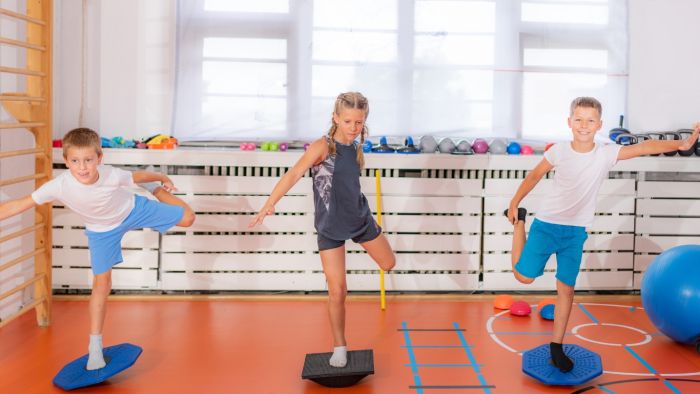
Standing on one foot is a simple yet effective static balance activity. Not only does it improve balance and stability, but this exercise engages the core muscles, leg muscles, and glute muscles, helping to strengthen them over time.
Your child will also become more aware of their body and gain postural control.
If you practice standing on one foot weekly, your little one will develop muscle strength and coordination, which helps prevent falls and supports good dynamic balance.
Here’s how you can help your kids practice:
- Start by having your child stand upright with their feet hip-width apart. They should engage their core to maintain a tall, upright posture.
- Ask them to slowly lift one foot off the ground, bend their knee, and bring it up in front of them. Their standing leg should stay straight but not locked.
- Have your child hold this position for as long as they can, aiming for at least 10-15 seconds.
- After holding this position, ask them to return to standing and switch legs.
- For an added challenge, have your child do alternating knee lifts in a smooth motion.
Remember to encourage your child not to lean forward or backward when they balance on one leg.
You can ask them to close their eyes, have them stand on a soft surface (like a folded towel), or twist their body in the opposite direction of the foot they’re standing on to increase the difficulty.
Repeating this exercise 3-5 times on each leg weekly will improve your child’s balance control and make it easier for them to perform more complicated exercises.
An added bonus is that it can also benefit their mental development by boosting their cognitive functions while they concentrate on maintaining balance.
2. Freeze Dance
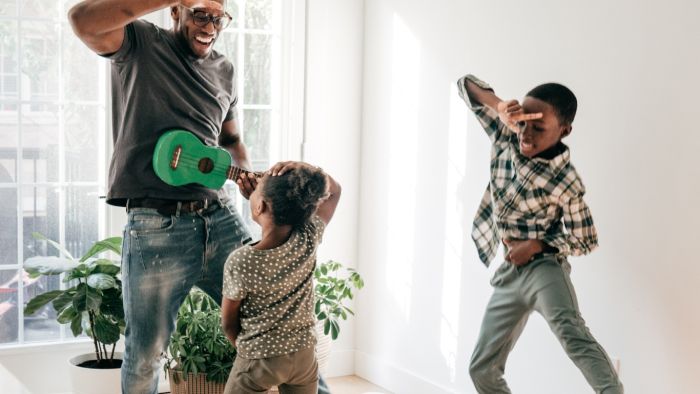
Freeze Dance is a fun way to incorporate balance training into playtime. Kids who regularly play this game will have improved core strength and better postural control.
This activity also helps develop good dynamic balance by combining static and dynamic exercises. As kids transition between dancing (dynamic) and freezing (static), they learn to control their movements.
This static and dynamic balance exercise blend is particularly beneficial for overall balance training.
Here’s how to play:
- Choose a few lively songs that your child enjoys. It could be anything that will get them excited and ready to dance!
- Play the music and just begin dancing. Encourage your kids to jump, twirl, and move in any way they like. The key is to let them express themselves and have fun.
- Periodically pause the music. When the music stops, your child must freeze in their current position and hold it until the music resumes. This could mean balancing on one foot, standing still, or holding any other pose they were in when the music stopped.
- Start the music and dance again.
- Repeat this process several times, mixing up the intervals between the music stopping and starting to keep your little ones on their toes.
Freeze Dance helps strengthen leg muscles, glute muscles, and the core. It can also improve coordination between the mind and body since your children will have to listen to the music and react quickly when it stops.
3. Heel-to-Toe Walk
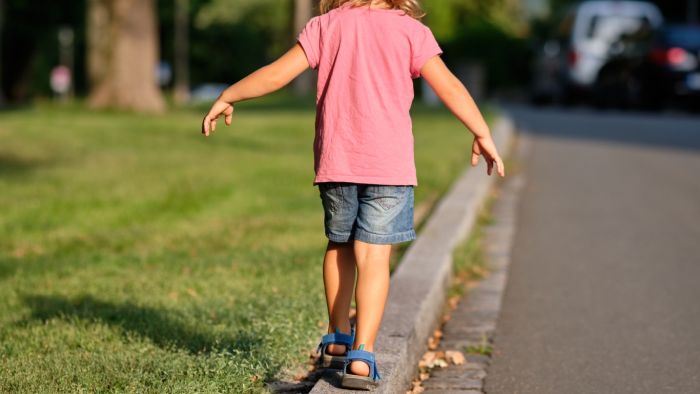
Heel-to-Toe Walk is a classic static balance activity for improving children’s balance control and postural stability.
By walking in this controlled manner, your kids will engage their core and leg muscles, which helps strengthen them over time.
This exercise also improves body awareness since kids have to focus on staying in a straight line while maintaining proper posture with each step.
Here’s how to perform this activity:
- Find a straight line on the floor, like a seam between tiles. You can also place a piece of tape on the ground or draw a chalk line on the driveway.
- Ask your child to stand at one end of the line with their feet hip-width apart. They should stand tall and engage their core.
- Instruct your child to take a step forward by placing the heel of one foot directly in front of the toes of the other foot, touching or nearly touching. They should then shift their weight forward and continue this heel-to-toe motion, focusing on placing one foot directly in front of the other with each step.
- Once your child reaches the end of the line, have them turn around carefully and walk back in the same heel-to-toe manner.
If your child extends their arms to the sides, they’ll have better balance as they walk. This can help them control their movements.
Heel-to-Toe Walk challenges children to control their movements and avoid swaying or losing balance. It also helps develop muscle strength and coordination, contributing to better overall physical fitness.
4. Balance Board
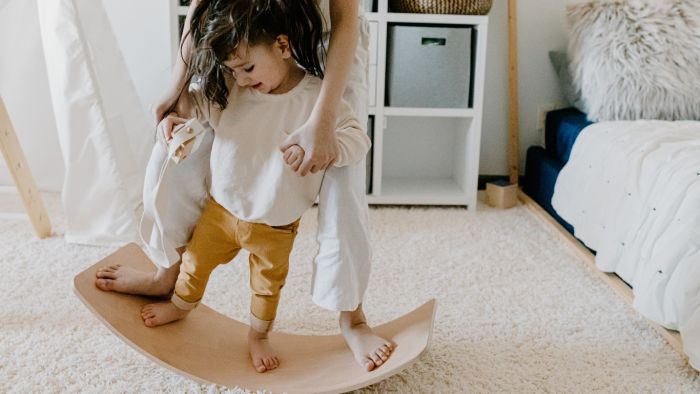
Using a balance board is a fun way for kids to improve their static balance and overall coordination. This activity requires constant adjustment and engagement of the core, glute, and leg muscles, which helps to strengthen these areas over time.
Balance boards can help your kids practice both static and dynamic balance. Because it improves muscle strength, particularly in the lower body, and cognitive functions, incorporating this exercise benefits multiple physical activities and sports, including learning how to ride a bike.
Here’s how you can get your kids started on a balance board:
- Select a balance board appropriate for your child’s age and physical ability. There are various types available, such as wobble boards, rocker boards, or balance discs.
- Have your child stand on their balance board with their feet hip-width apart. They should stand tall and upright and keep their core engaged for better stability.
- At first, your child can hold onto you, but they should try to find their balance and let go. Ask them to keep the board as level as possible without letting the edges touch the ground.
- To increase the challenge, incorporate weight shifting by asking your child to slowly move from side to side, front to back, or in a circular motion. This movement engages the core and leg muscles, helping to improve balance control.
Your child should practice balancing on the board for 1-2 minutes at a time, gradually increasing the duration. They can use their arms for better balance and to avoid swaying.
If you let them practice 2-3 times a day, they’ll improve within weeks!
- Black balance board can help improve core strength, coordination, posture, and balance
- Suitable for a wide range of exercises, including push-ups, plank, standing balance poses, and targeted workouts for strengthening specific muscles, ligaments, tendons, and joints
- Solid wood top supports up to 265 pounds; non-slip surface for a secure grip
- For individuals and athletes; ideal for a rehab center, gym, or home workout space
- GREAT BALANCE BOARD FOR PHYSICAL THERAPY: Balance Boards are used by physiotherapists and rehab centers across the world for effective injury rehabilitation; Good choice good choice for all users with balance issues; Simply standing on the Rocker Balance Board and shifting your weight from side to side or front to back will engage and stretch the muscles in your lower leg, hamstring, groin and core; Great to regain strength and rehab injuries like ankle and Achilles injuries, etc
- GREAT BALANCE BOARD FOR STANDING DESK: Balance Boards for Adults are impressive addition to any standing desk because it can keep you moving and increase your alertness; Using Standing Desk Balance Board under your desk at home or at work helps you reduce fatigue, prevent back pain and improve your posture; Smart way to stand up, keep your mind and body engaged while you’re working, and help relieve stress and foot pain in the process
- ANTISLIP SURFACE & HIGH DURABILITY: Premium Balance Board Ankle with antiskid pad on the 17,5 inch surface provides better grip during your workout; Rocker Board is built to last, made of high quality heavy duty wood, support up to 350lbs
- ANTISKID FEET & ANTISCRATCHING PADS: Keep Office Balance Board from slipping or sliding on the floor to ensure safety during your workout; Comfortable to perform side to side or front to back without worrying about slipping or damaging the floor; Besides, this also helps ensure Rocker Balance Board won’t scratch or scuff wood or tile floors
- Professional grade balance disc with pump
- 13 inch diameter for stability and balance
- Large massage spikes for maximum grip
- Helps improve balance, coordination, and flexibility
Boost Your Child’s Balance with Static Balance Exercises
Incorporating static balance exercises into your child’s routine can significantly impact their physical development.
These activities are not only fun but also highly effective in developing motor planning skills, improving balance control, strengthening core muscles, and improving coordination.
If your child regularly practices these exercises, they’ll develop better static and dynamic balance, which is essential for maintaining stability during everyday activities and preventing falls.
Remember, balance training doesn’t have to be boring. With exercises and games your child enjoys, they can improve their balance while having fun!
References
- Başakcı Çalık, B., Bas Aslan, U., Aslan, Ş., & Gür Kabul, E. (2019). The effect of static and dynamic balance training on balance in children with congenital blindness. Journal of Contemporary Medicine. https://doi.org/10.16899/gopctd.461566
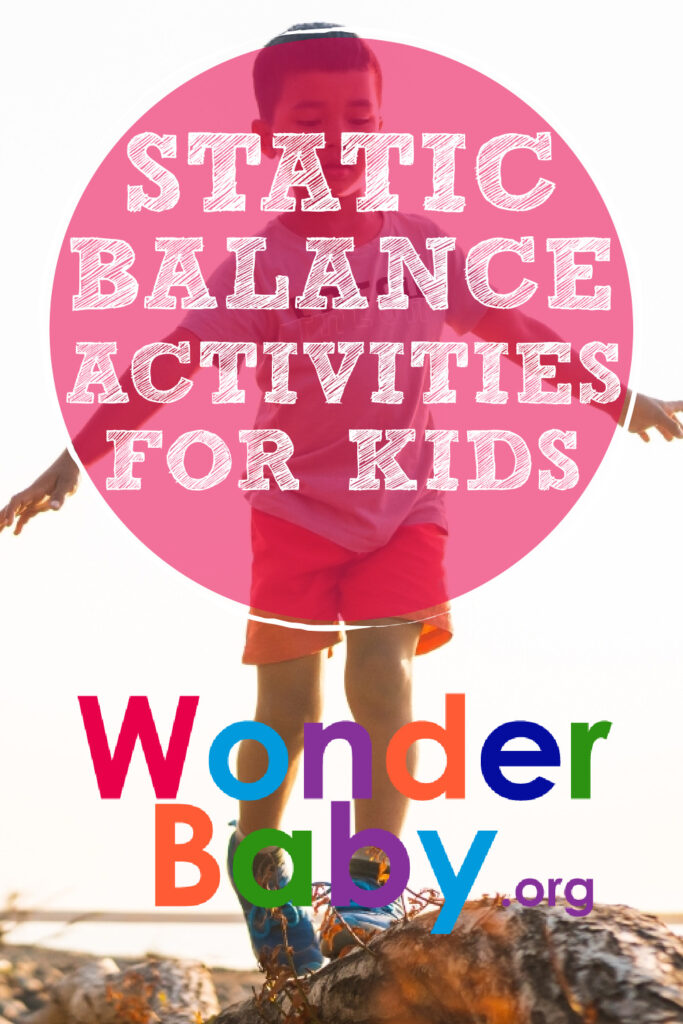
Related Posts
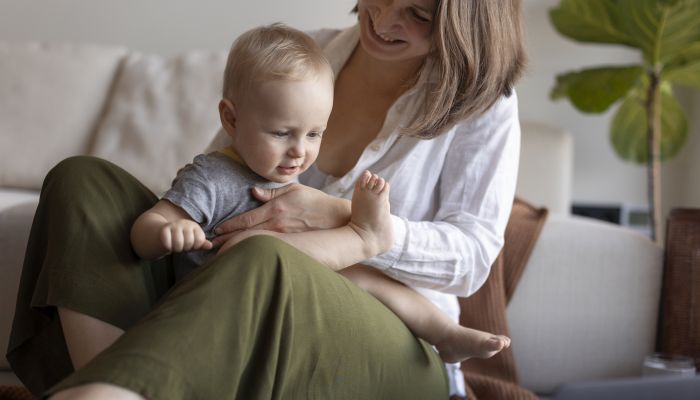
Fine and Gross Motor
5 Alternatives to Tummy Time for Babies with Motor Development Challenges
Does your baby struggle with tummy time due to motor development challenges? These alternatives to tummy time will offer the same benefits.
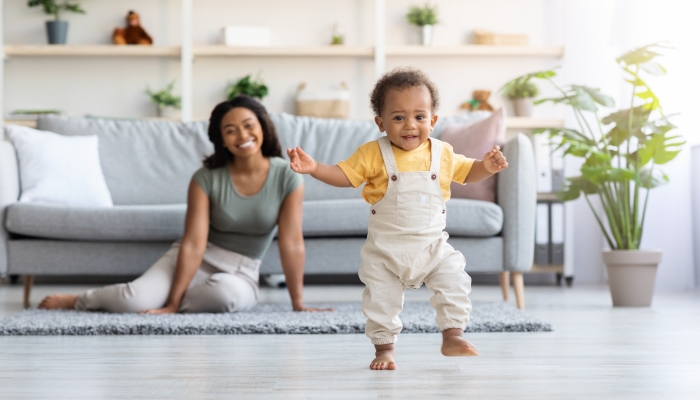
Fine and Gross Motor
Understanding Hypotonia & Hypertonia: What Parents Need to Know
Altered muscle tone can affect your child’s development. Learn more about ways you can help your child by understanding hypertonia and hypotonia.
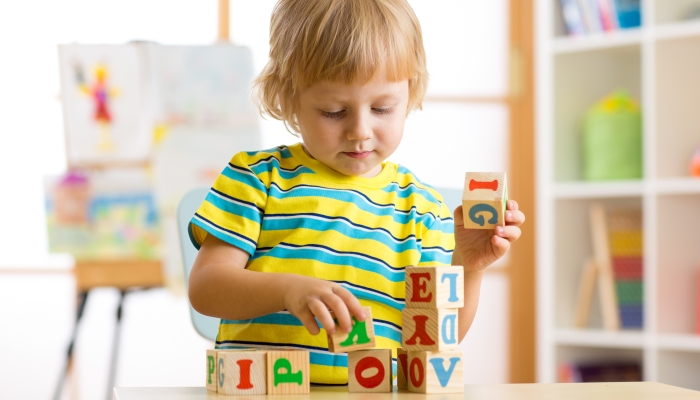
Development, Fine and Gross Motor
5 Spatial Awareness Activities for Kids
Learn about spatial awareness activities for kids to boost cognitive development, improve coordination, and enhance problem-solving skills.
